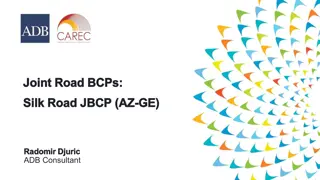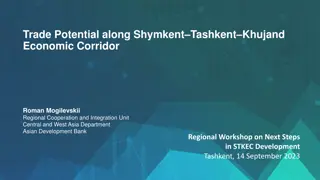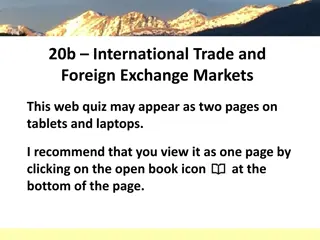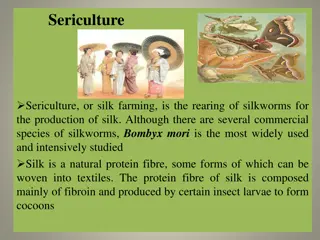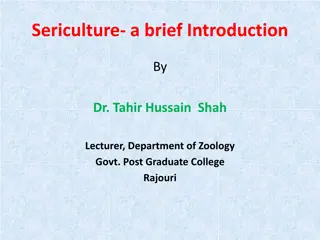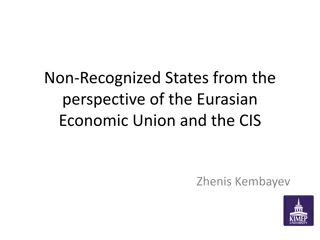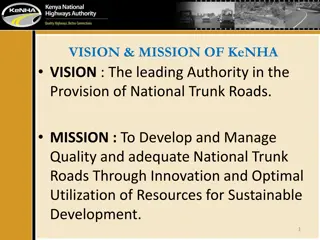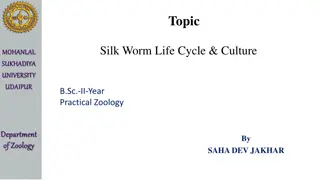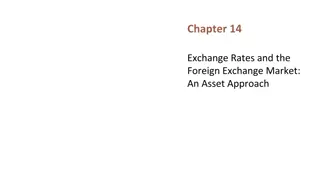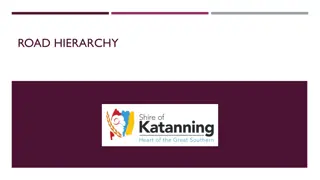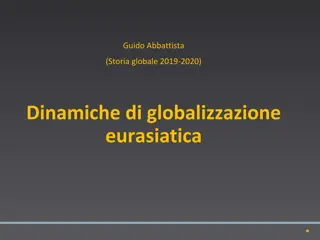Trade and Exchange Along the Silk Roads in Ancient Eurasia
The Silk Roads facilitated exchange of goods between people in different ecological zones, encouraging specialization and altering consumption patterns. Long-distance trade across Eurasia led to the growth of classical empires like Rome, China, and the Mongol Empire. Traders along the Silk Roads played a crucial role in spreading religious ideas, technology, and disease. The trade routes connected inner and outer Eurasia, creating a network of communication and exchange that influenced economic globalization.
Download Presentation

Please find below an Image/Link to download the presentation.
The content on the website is provided AS IS for your information and personal use only. It may not be sold, licensed, or shared on other websites without obtaining consent from the author.If you encounter any issues during the download, it is possible that the publisher has removed the file from their server.
You are allowed to download the files provided on this website for personal or commercial use, subject to the condition that they are used lawfully. All files are the property of their respective owners.
The content on the website is provided AS IS for your information and personal use only. It may not be sold, licensed, or shared on other websites without obtaining consent from the author.
E N D
Presentation Transcript
Silk Roads: Exchange across Eurasia Strayer: Ways of the World Chapter 8
The roots of economic globalization lie deep in the past http://www.npr.org/blogs/alltechconsidered/2013/10/03/228579712/the-man-behind-the-shadowy-illicit-drug-market-silk-road?sc=ipad&f=1001 1. exchange of goods between people of different ecological zones is a major feature of human history 2. at times, some societies have monopolized desirable products (like silk) 3. long-distance trade became more important than ever in 500 1500 C.E. a. most trade was indirect b. creation of a network of communication and exchange across the Afro-Eurasian world; a separate web in parts of the Americas
Why was trade significant? 1. altered consumption 2. encouraged specialization 3. diminished economic self-sufficiency of local societies 4. traders often became a distinct social group 5. sometimes was a means of social mobility 6. provided prestige goods for elites 7. sometimes the wealth from trade motivated state creation 8. religious ideas, technological innovations, plants and animals, and disease also spread along trade routes
The Growth of the Silk Roads 1. Eurasia is often divided into inner and outer zones with different ecologies a. outer Eurasia: relatively warm, well-watered (China , India , Middle East, Mediterranean) b. inner Eurasia: harsher, drier climate, much of it pastoral (eastern Russia , Central Asia ) c. steppe products were exchanged for agricultural products and manufactured goods
Which two Classical empires did the Silk Roads connect? Was there a third empire connected?
The Growth of the Silk Roads 2. creation of classical civilizations and imperial states in 500 1 B.C.E. included efforts to control pastoral peoples 3. trading networks did best when large states provided security for trade a. in classical era, Roman and Chinese empires anchored commerce at western and eastern ends of Eurasia b. in seventh and eighth centuries, the Byzantine Empire , Abbasid dynasty, and Tang dynasty created a belt of strong states c. in thirteenth and fourteenth centuries, Mongol Empire controlled almost the entirety of the Silk Roads
Goods in Transit 1. a vast array of goods traveled along the Silk Roads, often by camel a. mostly luxury goods for the elite b. high cost of transport did not allow movement of staple goods
Goods in Transit 2. silk symbolized the Eurasian exchange system a. at first, China had a monopoly on silk technology b. by the sixth century C.E., other peoples produced silk c. silk was used as currency in Central Asia d. silk was a symbol of high status e. silk industry only developed in Western Europe in twelfth century
Goods in Transit 3. volume of trade was small, but of economic and social importance a. peasants in the Yangzi River delta of southern China produced market goods (silk, paper, porcelain, etc.) instead of crops b. well-placed individuals could make enormous profits
Cultures in Transit 1. cultural transmission was more important than exchange of goods 2. the case of Buddhism a. spread along Silk Roads through Central and East Asia b. had always appealed to merchants c. conversion was heavy in the oasis cities of Central Asia d. conversion was voluntary e. many Central Asian cities became centers of learning and commerce f. Buddhism spread much more slowly among Central Asian pastoralists g. in China , was the religion of foreign merchants or rulers for centuries h. Buddhism was transformed during its spread
Disease in Transit 1. the major population centers of the Afro-Eurasian world developed characteristic disease patterns and ways to deal with them 2. long-distance trade meant exposure to unfamiliar diseases a. early case: great epidemic in Athens in 430 429 B.C.E. b. during the Roman and Han empires, smallpox and measles devastated both populations c. in 534 750 C.E., bubonic plague from India ravaged Mediterranean world
Disease in Transit 3. the Black Death spread thanks to the Mongol Empire s unification of much of Eurasia (thirteenth fourteenth centuries) a. could have been bubonic plague, anthrax, or collection of epidemic diseases b. killed one-third of European population between 1346 and 1350 c. similar death toll in China and parts of the Islamic world d. Central Asian steppes were badly affected (undermined Mongol power) 4. disease exchange gave Europeans an advantage when they reached the Western Hemisphere after 1500
POV: page 221 Strayer text They were also outraged at the moral impact of wearing revealing silk garments. I can see clothes of silk, lamented Seneca the Younger in the first century C.E., if materials that do not hide the body, nor even one s decency, can be called clothes Wretched flocks of maids labour so that the adulteress may be visible through her thin dress, so that her husband has no more acquaintance than any outsider or foreigner with his wife s body.





